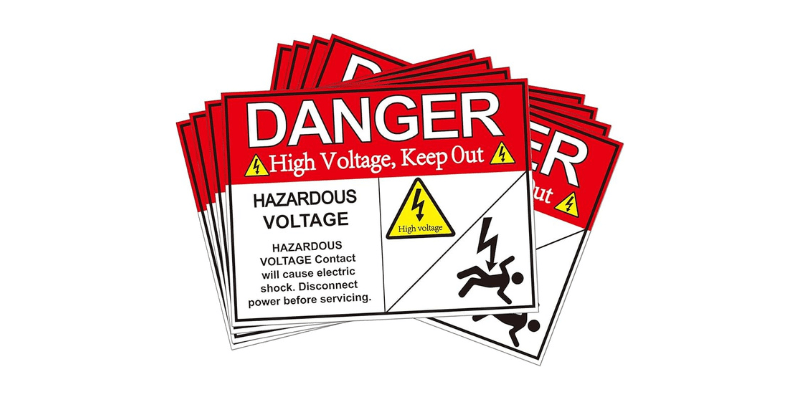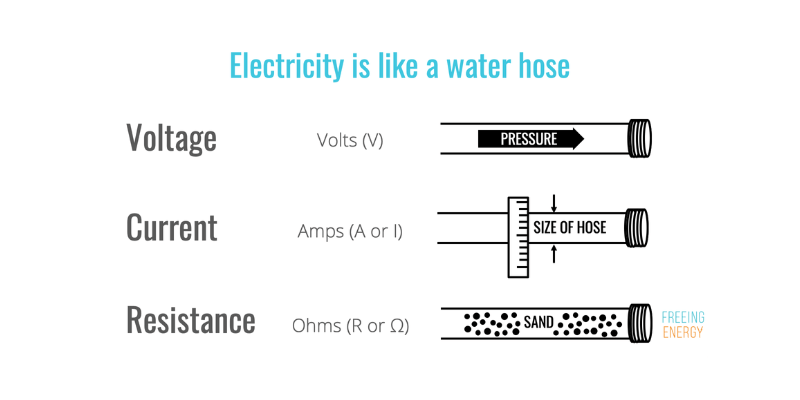Baterie zasilają wszystko, od telefonów po samochody, co czyni je niezbędnymi w codziennym życiu. Jednak moc baterii jest różna. Zrozumienie napięcia ma kluczowe znaczenie przy wyborze pomiędzy różnymi akumulatorami. Przyjrzyjmy się, czym jest napięcie, jak je mierzyć i jakie zachodzą w nim reakcje chemiczne.
Co to jest napięcie akumulatora?
Napięcie akumulatora to różnica potencjałów elektrycznych pomiędzy dodatnim i ujemnym zaciskiem akumulatora. Reprezentuje ciśnienie, które popycha elektrony z jednego punktu do drugiego.
Można to sobie wyobrazić jako ściśniętą sprężynę w akumulatorze, gdzie większe ściskanie koreluje ze zwiększoną energią potencjalną po zwolnieniu. Ta cecha jest niezbędna do określenia mocy wyjściowej akumulatora, wymaganego napięcia dla urządzeń i stanu naładowania.
Inną analogią jest ciśnienie wody w wężu: napięcie przepycha wodę przez wąż (prąd), mierzony w amperach. Różne systemy elektryczne wymagają różnych napięć: od 12–48 V dla systemów o niskim napięciu prądu stałego do 110 V lub 220 V dla zastosowań mieszkaniowych prądu przemiennego. Wyższe napięcia przepuszczają więcej prądu przez przewody; pomyśl, jak silny może być strumień wody pod wysokim ciśnieniem.
Podczas gdy niższe napięcia (poniżej 50 woltów) są ogólnie bezpieczne zgodnie ze standardami OSHA, prądy elektryczne o wyższych napięciach występujące w sieciach mieszkalnych i liniach energetycznych mogą być niebezpieczne.

Co wytwarza napięcie akumulatora?
Baterie składają się z anoda, katoda, elektroliti separator. Anoda to strona ujemna, zwykle wykonana z cynku, litu, grafitu lub platyny. Katoda jest końcem dodatnim i zwykle zawiera metale utleniające, takie jak tlenek litu lub tlenek miedzi.
Elektrony nie mogą swobodnie przepływać pomiędzy anodą i katodą; jednakże, gdy są połączone przewodnikiem, elektrony przemieszczają się z anody do katody, wytwarzając napięcie.

Jaka jest różnica między napięciem a prądem?
Napięcie i prąd są ze sobą ściśle powiązane, ale mają odrębną charakterystykę.
- Napięcie mierzy energię potencjalną elektryczną na jednostkę ładunku, podczas gdy prąd reprezentuje szybkość przepływu elektronów.
- Napięcie mierzy się w woltach (V), a prąd w amperach (A).
- Napięcie, oznaczone przez “V,” napędza prąd w obwodzie, podczas gdy prąd, oznaczony przez “I,” oznacza przepływ elektronów.
- Napięcie uważa się za niezależne od obwodu, podczas gdy na prąd wpływa rezystancja obwodu.

Jak mierzone jest napięcie akumulatora?
Pomiar napięcia akumulatora jest niezbędny do określenia jego stanu naładowania.
Najlepszą metodą jest użycie multimetru: podłącz czerwoną sondę do zacisku dodatniego, a czarną sondę do zacisku ujemnego, a następnie dokonaj odczytu.

Co to jest normalne napięcie?
Normalne napięcie akumulatora zależy od jego rodzaju i reakcji chemicznej. Akumulatory o korzystniejszych reakcjach utleniania i redukcji wytwarzają wyższe napięcia. Na przykład akumulator samochodowy ma zwykle napięcie około 12,6 wolta, podczas gdy akumulator AAA ma około 1,5 wolta.
Dopasowanie prawidłowego napięcia jest niezwykle istotne, aby uniknąć uszkodzenia elektroniki lub akumulatora.
Napięcia kwasu ołowiowego a napięcia akumulatorów litowo-jonowych
Napięcie akumulatora zmienia się w zależności od poziomu naładowania. W pełni naładowany akumulator dostarcza wyższe napięcie niż akumulator o niskim poziomie naładowania lub rozładowany. Zjawisko to, zwane utratą napięcia, zależy od typu akumulatora.
Tradycyjne akumulatory kwasowo-ołowiowe charakteryzują się większymi spadkami napięcia niż akumulatory litowe. Baterie litowe dzięki zaawansowanej technologii są bardziej energochłonne i mniej podatne na wpływy Prawo Peukerta.
12-woltowy akumulator kwasowo-ołowiowy dostarcza około 12,7 wolta po pełnym naładowaniu i 11,6 wolta przy 20% pojemności. Dla porównania, bateria litowa zapewnia 13,6 V przy pełnym naładowaniu i 12,9 V przy 20% pojemności.

Czy napięcie akumulatora jest niebezpieczne?
Według OSHA, napięcie akumulatora nie jest uważane za niebezpieczne, dopóki nie przekroczy 50 woltów. Organizm ludzki może ogólnie wytrzymać bez szkody porażenie prądem do 50 woltów, ponieważ ramiona i nogi mają rezystancję co najmniej 500 omów. W większości przypadków opór ten zapobiega przedostawaniu się śmiertelnego prądu do serca.
Jednakże napięcia powyżej 50 woltów mogą sprawić, że ciało stanie się przewodnikiem, stwarzając poważne ryzyko, w tym oparzenia, złamania kości, utratę słuchu, obrażenia oczu, zatrzymanie akcji serca i śmierć. Nawet 10 miliamperów przepływających przez serce może zakłócić jego przewodnictwo elektryczne i spowodować śmiertelne zaburzenia rytmu; dlatego wszystkie napięcia powyżej 50 woltów są uważane za niebezpieczne.
Dlaczego napięcie akumulatora ma znaczenie?
Napięcie akumulatora jest ważne, ponieważ wskazuje, jaką moc może dostarczyć akumulator, pomagając określić wymagane napięcie dla elektroniki i jej stan naładowania. Bez pomiaru napięcia akumulatorów bezpieczne użytkowanie akumulatorów byłoby niemożliwe.

